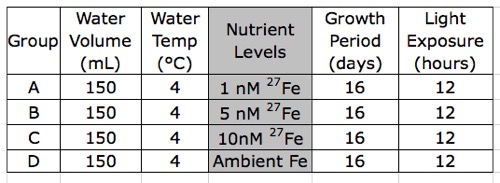Open Water
At approximately 0610 this morning, we exited the protected Straights of Magellan and entered the open waters of the Atlantic ocean. I knew we had entered open water because the ship immediately started moving due to the waves and sea swells. We are heading towards Isla del Estado at the eastern tip of South America. Once we pass this island, we will no longer have the lee (protection) of the land and we will enter the Drake Passage. We expect to enter the Drake Passage in less than 10 hours and I am told that our entrance into this infamous area will be easy to figure out. The conditions are generally rough in the Drake Passage and can cause many to feel uneasy. I'll let you know how I fair in tomorrow's journal.
 High winds and open water can create larger sea conditions. Notice the main deck area (painted green) is wet from the large waves hitting the side of the boat and pushing across the deck. Waterproof shoes are definitely required to move on deck in this weather.
High winds and open water can create larger sea conditions. Notice the main deck area (painted green) is wet from the large waves hitting the side of the boat and pushing across the deck. Waterproof shoes are definitely required to move on deck in this weather.
 Sea conditions look different from the bow (front) of the ship. Notice that there is no land in sight. Once we round Isla del Estado at the southern tip of South America we are in open water until we reach the Western Antarctic Peninsula.
Sea conditions look different from the bow (front) of the ship. Notice that there is no land in sight. Once we round Isla del Estado at the southern tip of South America we are in open water until we reach the Western Antarctic Peninsula.
Incubation Preparation
In my journal from 9-6-16, I talked about the term trace metal clean and the importance of cleaning and then re-cleaning bottles that are used in these various trace metal experiments. Bottle cleaning was again the task of the day. You may wonder how it is possible to still have bottles to clean. Well, there are about 2,000 bottles that will eventually be used for incubation experiments, biological cultures, speciation experiments and seawater transport. Most of these bottles went through the first round of cleaning at the labs at URI, ODU and USF. The rinsing of the bottles, however, must be done on board in a clean environment. Once all of the bottles are prepped, the science team can focus on other lab tasks.
 Various sizes of bottles can be found throughout the ship. These bottles will be used for incubation experiments, speciation studies and sea water transport.
Various sizes of bottles can be found throughout the ship. These bottles will be used for incubation experiments, speciation studies and sea water transport.
Incubation Experiments
One of the main goals of this research cruise is to collect water samples for incubation experiments. When most people hear the term incubation, they conjure up images of chicks hatching at a museum or other education facility. The chicken eggs are usually kept in an incubator until they hatch. This incubator is necessary to simulate the temperature the chicks would encounter if the mother hen was present. Incubation, however, doesn't always involve warm temperatures. The incubation experiments for this research cruise require constant temperatures around 4 degrees Celsius/39 degrees Fahrenheit. So instead of growing chicks with warm temperatures, we are going to grow diatoms with cold temperatures.
Specific factors will be manipulated during the incubation experiments to allow for chemical and biological analysis to help learn more about how diatoms function in low nutrient environments. The incubations are set up with one independent variable or IV. In my science classes, students learn that the IV is the one factor that scientist manipulate during the experiment. This IV usually relates to the research question and is easy to identify when you look at the set-up of the lab. I have created a hypothetical experiment to help explain the term independent variable.
 Graphic organizers are easy ways to understand an experiment and identify the independent or manipulated variable.
Graphic organizers are easy ways to understand an experiment and identify the independent or manipulated variable.
If you look at all four groups (A,B,C and D) in the table, all of the factors are controlled or maintained except for the category shaded in grey. The nutrient levels (amount of each nutrient) added to each incubation bottle changes between groups. NONE of the other factors are different. This one varying factor (nutrient levels) is the IV. If analysis of diatoms from each group show differences in characteristics like growth rate, chlorophyll production, nutrient uptake, etc., the differences may be due to the IV. Remember that the image above represents a hypothetical experiment. We expect to reach our first sampling station in a few days. At that point, I will be able to tell (and show) you more about the specific factors for this research cruise.
Washing bottles and collecting loads of seawater seems like a lot of work for a microscopic organism. Is it worth it? Absolutely! Why? I'll tell you more about the importance of diatoms tomorrow. Stay tuned!
Question for Journal Readers
Many experiments include samples that are set aside as a control group. Which group from my hypothetical experiment above is the control group and why is this group important?


Comments